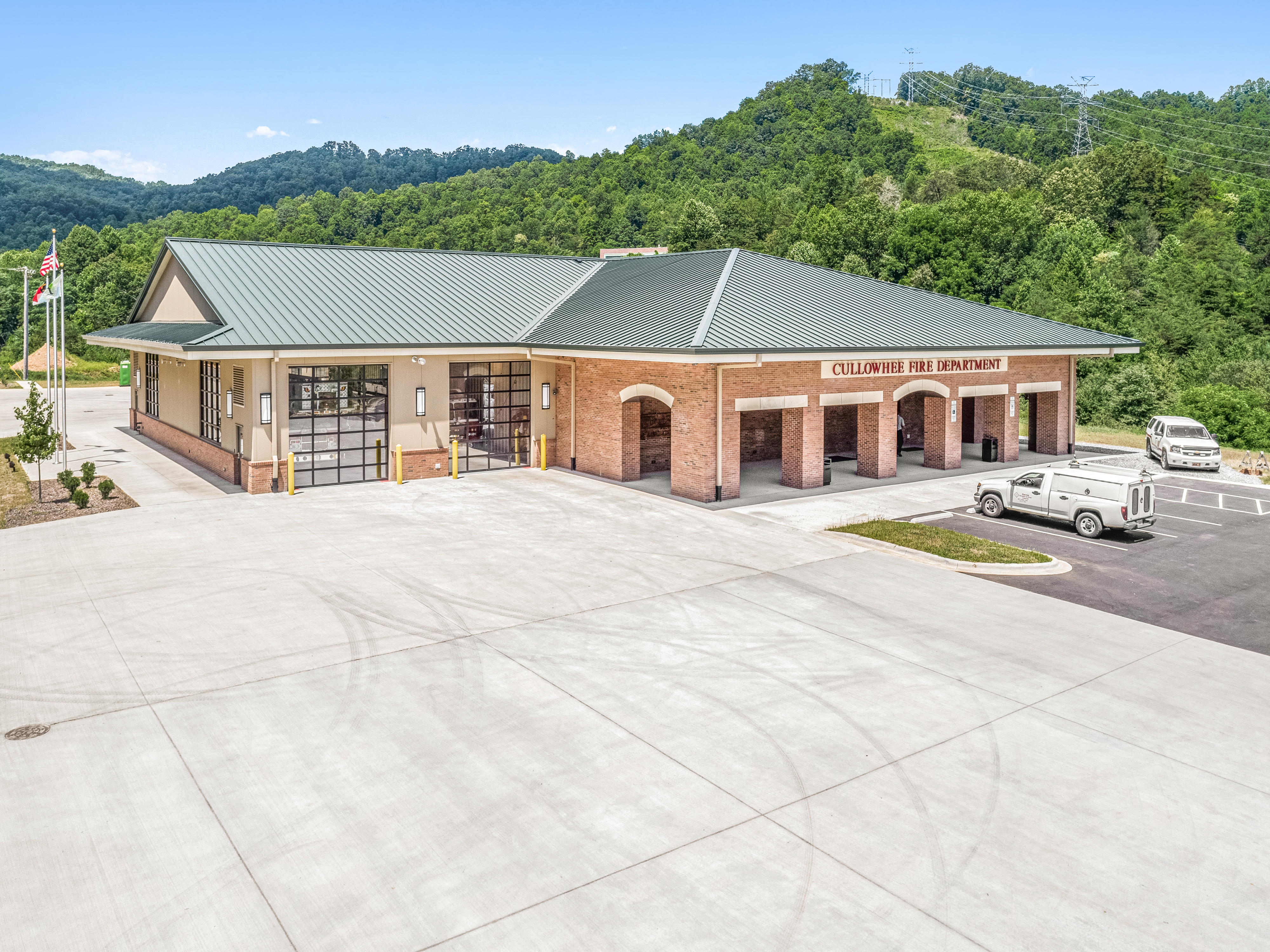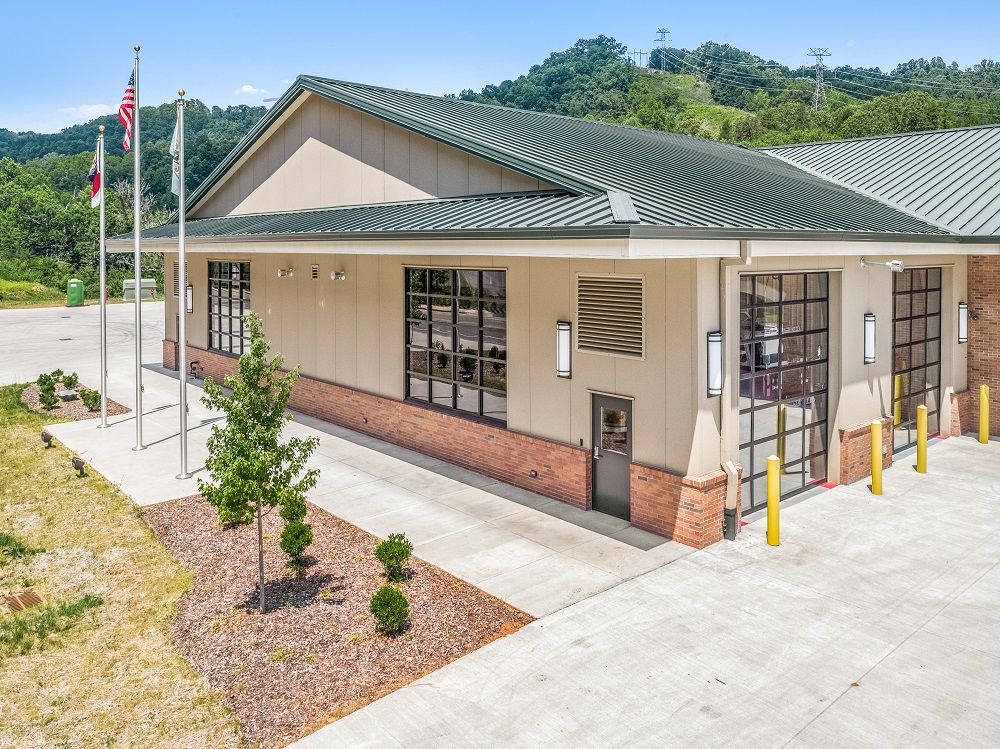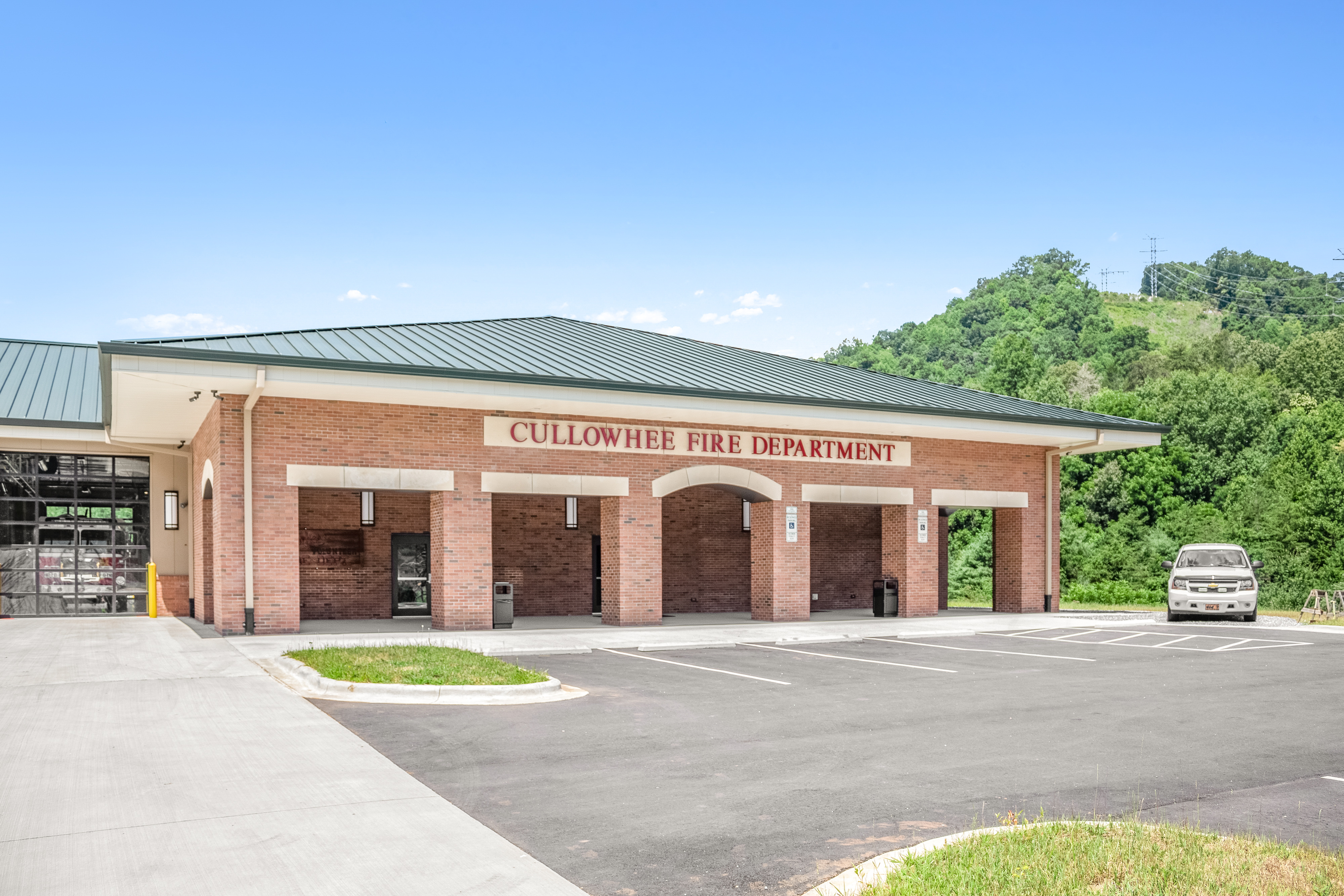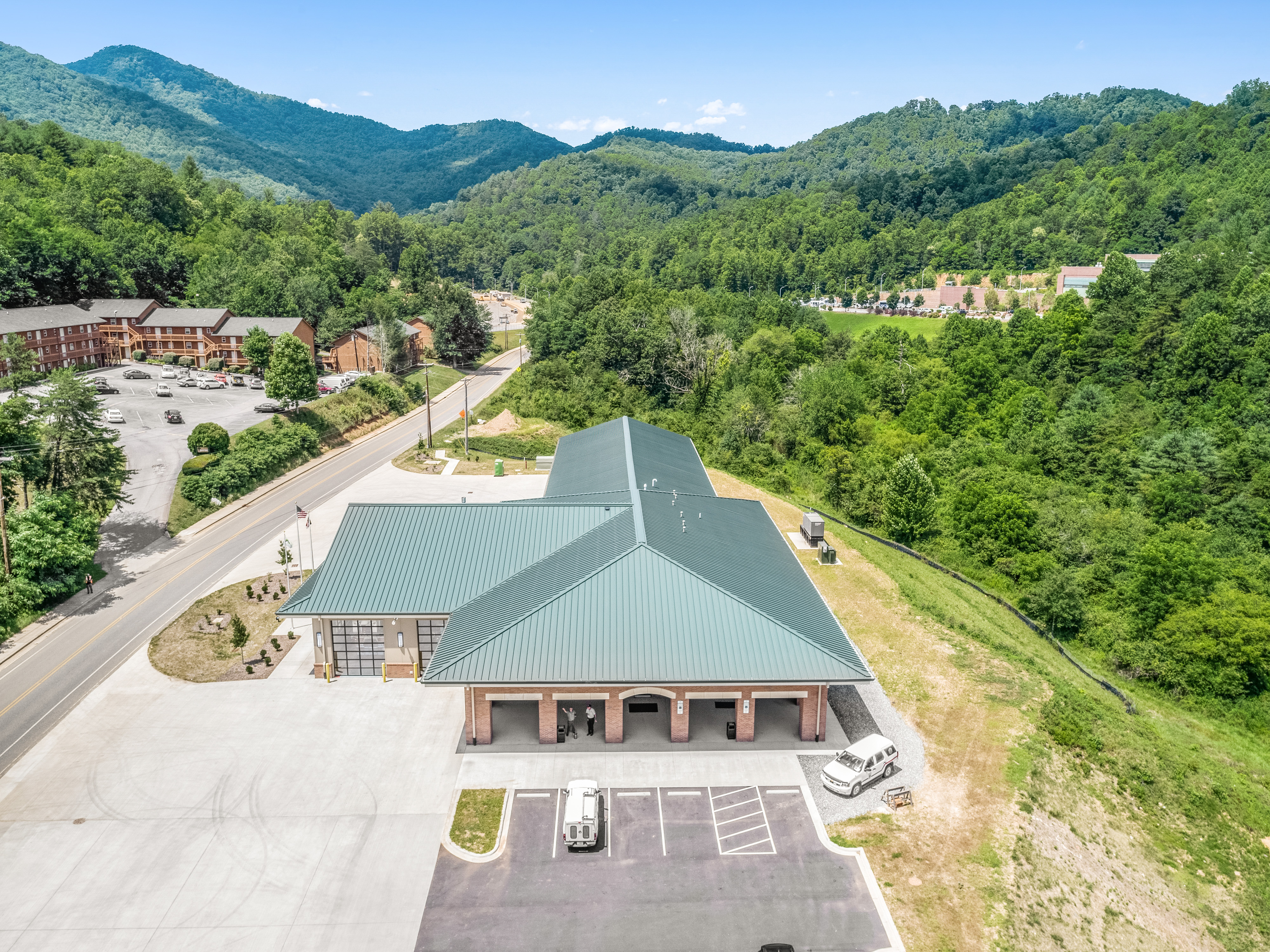The town of Cullowhee, NC, serves as the home of Western Carolina University (WCU), part of the University of North Carolina System. In the past 20 years, enrollment has doubled at WCU, causing a simultaneous spike in the town’s population.
Translate that growth to the volunteer fire service that supports and protects the community. Years ago, firefighters might respond to only 100 calls all year. Today, they might get between 75 and 100 calls a month.
To accommodate the growing needs of the fire department, Cullowhee approved the construction of a new fire station along Little Savannah Road.
Insulated metal panels (IMPs) manufactured by Metl-Span proved to be the optimal construction solution for the new, expanded facility.

Fired Up to Fuel Growth
At nearly 17,000 square feet, the new Cullowhee Fire Station includes eight truck bays – six back-end bays, and two extra-long drive-through bays for larger ladder trucks. This doubled the capacity for trucks and equipment compared to the previous fire station. The new facility also boasts an expanded space for education and training, a larger kitchen, offices for officers within the department, and bunk rooms.
During the planning phases, Odell Thompson, principal at Mahaley Odell Thompson Architect, envisioned a new home for firefighters that would instill pride and simultaneously fit into its surroundings.
“[Residents] would recognize it as an institution that is important to their community, taking care of their community,” said Thompson. “Part of the design scheme was to relate in some ways to the architecture on the campus [of WCU], which has a lot of brick and capstone details.”
To deliver on this vision, Thompson designated brick and capstone for the exterior of the building that included the administrative offices. The home for trucks and equipment would have a more industrial feel, and metal panels would create that aesthetic.

Right and Tight
Thompson and the design team initially encountered a challenge based on new design standards in the town that did not allow for metal siding on a building.
The solution: CF Tuff-Cast™ panels from Metl-Span, an attractive insulated metal panel with the appearance of finished precast concrete. This satisfied the local planning commission, which approved the use of the product so the project could move forward.
“When you look at it, you don’t think ‘metal building,’” Thompson noted when it came to the exterior of the building that included Tuff-Cast. “Everybody was happy with the look of it.”
Metl-Span’s CF Tuff-Cast has an exterior surface with a hard, aggregated fiber-reinforced polymer coating created with the factory-applied Tuff Cote®finish system. The result is an extremely durable, impact- and abrasion-resistant coating that withstands severe weather conditions.
Tuff-Cast also helped Thompson to deliver the right aesthetics on the inside of the building.
“We don’t see that vinyl insulation on the [inside] walls [with Tuff-Cast]. It is a finished product, so it looks good,” Thompson remarked. “The light color is very nice on the inside, because it reflects the light above the trucks. It just gives it a clean, finished look.”

Making the Call
Thompson’s experience with Metl-Span’s Tuff-Cast on the Cullowhee Fire Station project has him thinking about ways to apply the solution in future projects.
“It was the exact right product for this location and for this type of building,” Thompson said.
It is also why he plans to recommend it again when other fire companies are looking to build their new homes.
Related Stories
| Aug 11, 2010
AAMA leads development of BIM standard for fenestration products
The American Architectural Manufacturers Association’s newly formed BIM Task Group met during the AAMA National Fall Conference to discuss the need for an BIM standard for nonresidential fenestration products.
| Aug 11, 2010
9 rooftop photovoltaic installation tips
The popularity of rooftop photovoltaic (PV) panels has exploded during the past decade as Building Teams look to maximize building energy efficiency, implement renewable energy measures, and achieve green building certification for their projects. However, installing rooftop PV systems—rack-mounted, roof-bearing, or fully integrated systems—requires careful consideration to avoid damaging the roof system.
| Aug 11, 2010
Pella introduces BIM models for windows and doors
Pella Corporation now offers three-dimensional (3D) window and door models for use in Building Information Modeling (BIM) projects by architects, designers, and others looking for aesthetically correct, easy-to-use, data-rich 3D drawings.
| Aug 11, 2010
AAMA developing product-based green certification program for fenestration
The American Architectural Manufacturers Association is working on a product-based green certification program for residential and commercial fenestration, the organization announced today. AAMA will use the results of a recent green building survey to help shape the program. Among the survey's findings: 77% of respondents reported a green certification program for fenestration would benefit the product selection process for their company.
| Aug 11, 2010
Seven tips for specifying and designing with insulated metal wall panels
Insulated metal panels, or IMPs, have been a popular exterior wall cladding choice for more than 30 years. These sandwich panels are composed of liquid insulating foam, such as polyurethane, injected between two aluminum or steel metal face panels to form a solid, monolithic unit. The result is a lightweight, highly insulated (R-14 to R-30, depending on the thickness of the panel) exterior clad...
| Aug 11, 2010
AIA Course: Enclosure strategies for better buildings
Sustainability and energy efficiency depend not only on the overall design but also on the building's enclosure system. Whether it's via better air-infiltration control, thermal insulation, and moisture control, or more advanced strategies such as active façades with automated shading and venting or novel enclosure types such as double walls, Building Teams are delivering more efficient, better performing, and healthier building enclosures.







